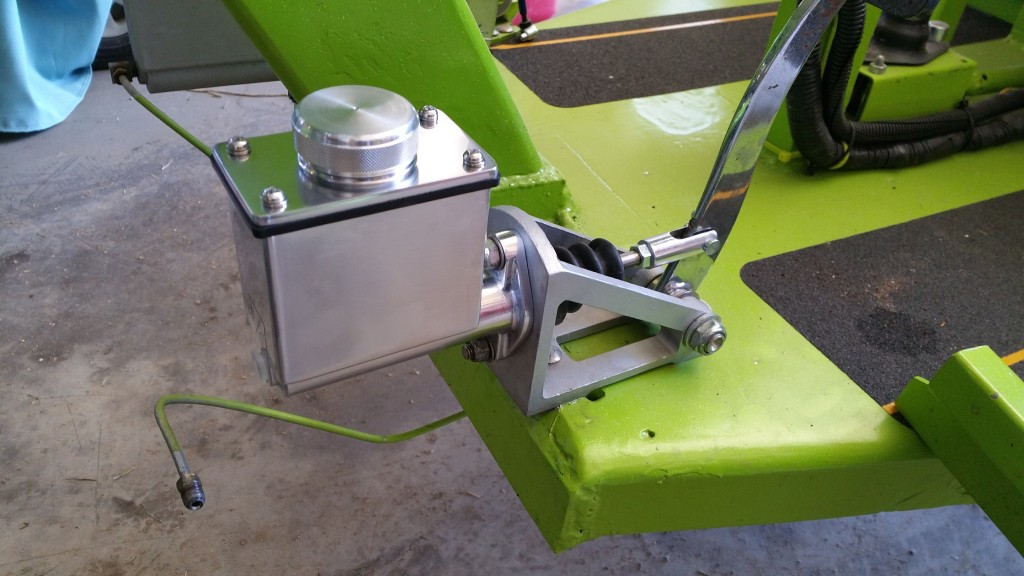This weekend, particularly Sunday, I did quite a bit of work on Kermit, the green trike. The big thing is that the clutch master cylinder leaks down so fast that it’s pretty much undrivable. Certainly unsafe to drive.
Qualitat VW stocks a lot of parts that most shops have to order, so on Friday we went out there to get a rebuild kit of it. He didn’t have the rebuild kit for this size, the 5/8″ piston, but he did for 3/4″. We elected to get a new EMPI 3/4″ master cylinder, but also got a 3/4″ rebuild kit to be used for the brake cylinder. Someone thinking more clearly would have put the new cylinder on the brakes and rebuilt the old cylinder for the clutch. At least I can still do that if I decide to.
After reinstalling the pedal and bleeding the line to the clutch, I began working at trying to make the engine reliable. It’s been bad about getting into a mode where it wont keep running at an idle. It will typically restart without any appreciable difficulty, but it just won’t idle.
Having followed instructions on adjusting the carburetor several times before, I have never been able to get it to act as described.
The entire procedure involves setting everything except the carburetor first. The first two, setting the valves and points, are pretty easy. Well, easy enough to do 100% successfully. Step 3 is setting the timing.
Now, it seems as though setting the timing would be easy, but it’s adjusting the timing that’s easy. Actually setting it to a value that is agreed upon by all the documentation I can find is the tricky part.
Timing involves the distributor, duh. The trouble with setting the timing is that pretty much all the documented procedures are for fairly specific combinations of hardware that are in stock Beetles, running stock carburetors and stock distributors and stock exhaust. Almost none of that applies here.
As for setting the timing, the biggest thing seems to be the vacuum signal from the carburetor to the distributor. Yes, the PICT30/31 is a stock carburetor, and yes, the Bosch 034 is essentially a stock distributor, but the port on the carburetor that is supposed to connect to the distributor has almost no detectable vacuum, certainly not as much as is required to operate the dashpot on the distributor and connection anywhere else maintains a fairly high vacuum at all times and thus has essentially no effect. The distributor is a dual advance model, with both vacuum and centrifugal advance, so it basically ends up running like a 009 distributor.
With the timing running essentially centrifugal only, the problem now becomes adjusting the carburetor.
I did find something interesting while researching a bit on this blog post. Something that apparently happens with some regularity is the diaphragm in the dashpot on the distributor being damaged by connecting it to a vacuum source that is too powerful, particular under certain circumstances where there is a high engine rpm with a closed throttle. Since the dashpot did not seem to respond to the “proper” vacuum port, at one time it was connected to another port and now I wonder if in doing so, I burst that diaphragm. That could explain why advance doesn’t seem to work right and why adjusting the carburetor might be so hard, what with a vacuum leak through at bad advance diaphragm.
I found another related article about air leaking into the engine, generally.
- The car acts like it’s not getting enough fuel; i.e., running too lean. Yes…
- The car may run well at highway speeds, but the engine dies at idle and will only idle at higher than normal rpm (e.g., >1200 rpm). Yes…
- The engine hesitates and dies when you take your foot off the throttle, or hesitates when pulling out of corners at low rpm. Yes…
- Difficulty in properly tuning the carburetor (actually tuning will be impossible). Yes…
- Since the carburetor cannot be tuned correctly, the timing cannot be properly set. Yes…
- You may get engine “looping” (alternating between high and low rpm). Not really…
- The engine may backfire. Not really…
It is certainly worth investigating, particularly if the distributor diaphragm turns out to be damaged.
